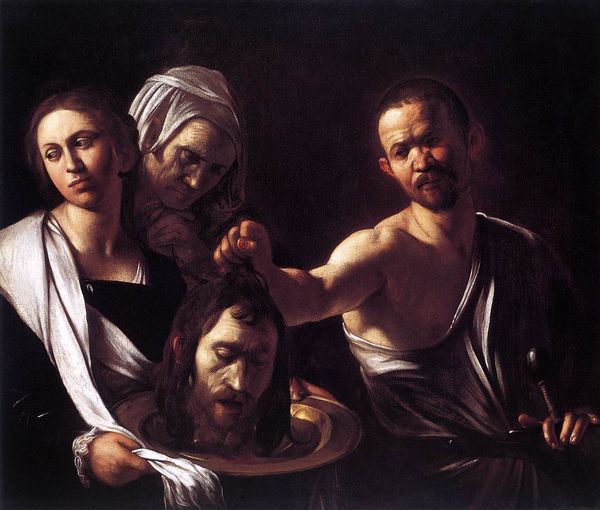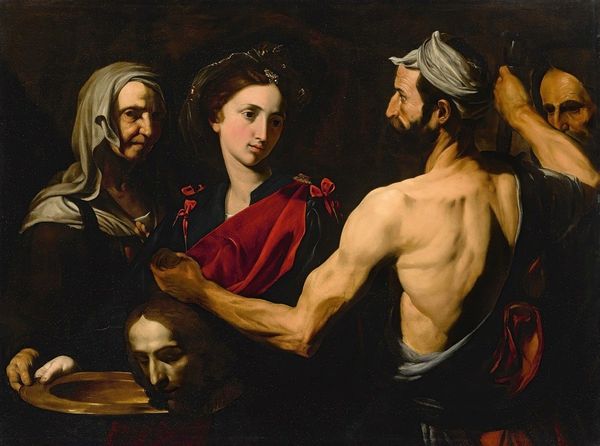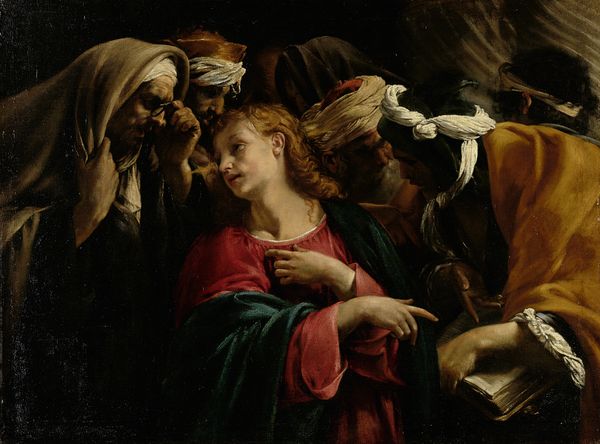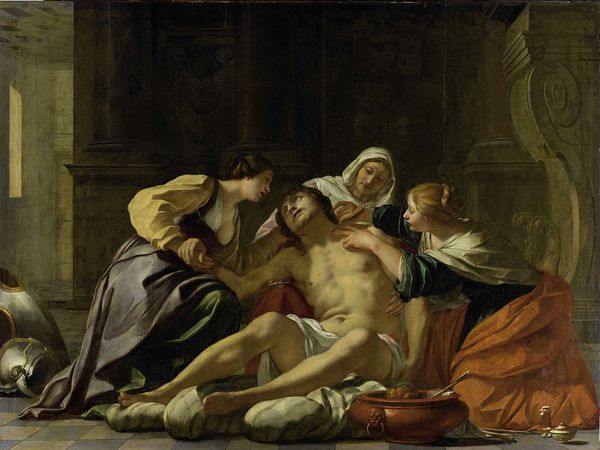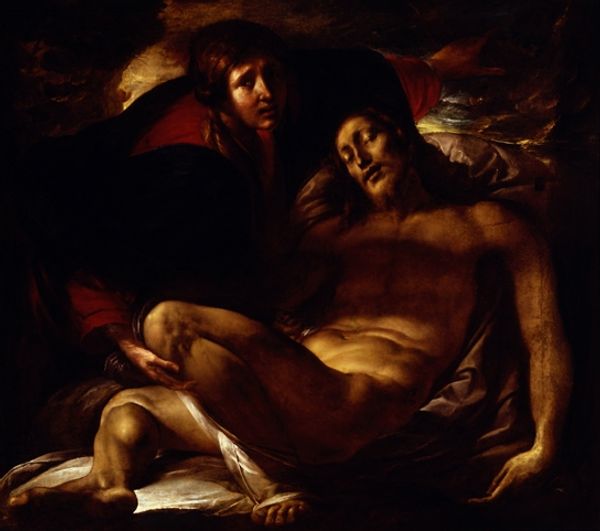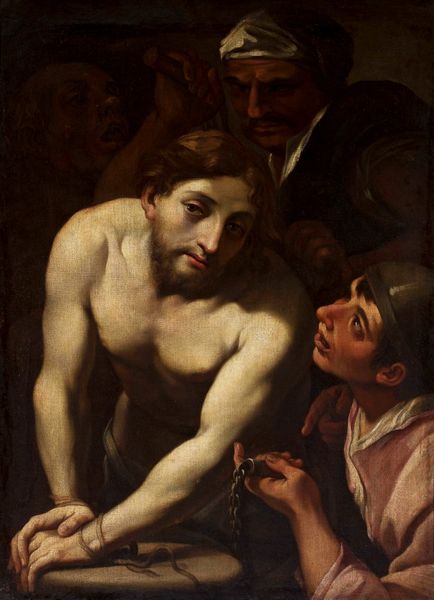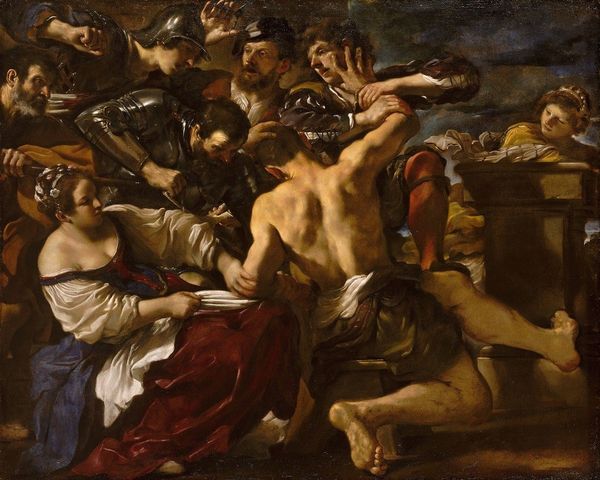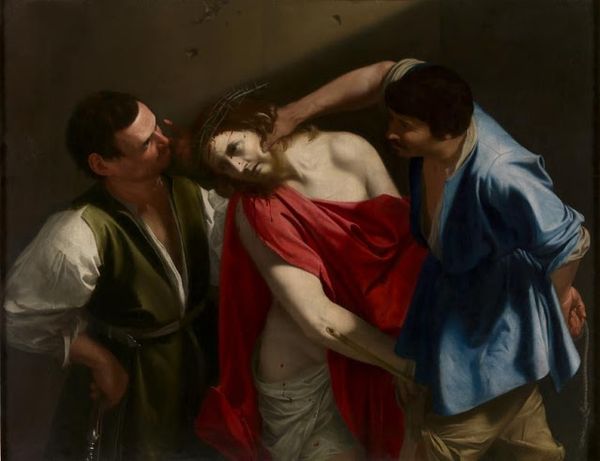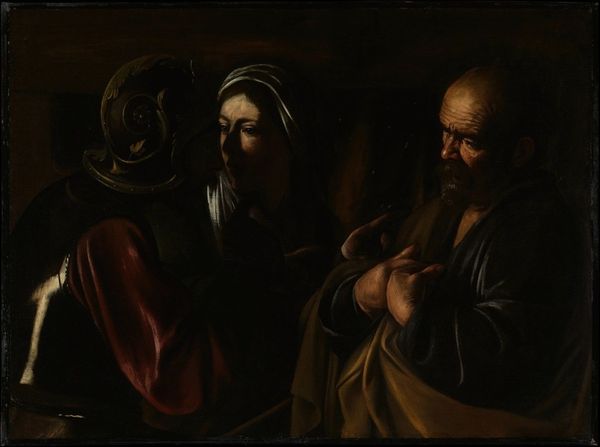
Salome with the Head of John the Baptist 1609
0:00
0:00
caravaggio
Palacio Real de Madrid, Madrid, Spain
painting, oil-paint
#
portrait
#
narrative-art
#
baroque
#
portrait
#
painting
#
oil-paint
#
figuration
#
christianity
#
history-painting
#
portrait art
#
christ
Dimensions: 116 x 140 cm
Copyright: Public domain
Editor: Here we have Caravaggio's "Salome with the Head of John the Baptist," painted in 1609. It's a powerful scene, rendered in oil. I’m immediately struck by the contrasting expressions. What do you see in this piece? Curator: It’s interesting that you're drawn to the emotional variance. For me, this painting is a potent depiction of the intersection of power, gender, and violence within a patriarchal system. Think about Salome; she’s often depicted as a seductress, but what agency did she truly have? Her actions are arguably a result of manipulation within a male-dominated court. The detached, almost mournful look on her face in Caravaggio’s rendering complicates the typical narrative of female culpability. What does this more subtle rendering of Salome evoke for you? Editor: It makes me consider the systemic pressures she was under. The older woman next to her also seems important. Curator: Precisely! The presence of the older woman – often interpreted as Herodias – speaks to the cycles of violence and revenge perpetuated through generations of women who have been complicit, coerced, or victimized within structures of power. Caravaggio isn't just showing us a biblical scene, he's implicating us in a conversation about the roles we play in perpetuating societal injustices. Editor: So, it is like Caravaggio is using this history painting to confront current issues of social inequality. Curator: Exactly! And note how he utilizes the Baroque style, the stark contrasts, the tenebrism, not just for drama, but to underscore the stark realities of power and marginalization that continue to resonate today. Considering this history painting in this way – what new insights does that provide? Editor: Thinking about it as a commentary on power dynamics changes my perception entirely. I initially focused on the immediate horror, but I see the layers of systemic issues now. Curator: Indeed. And hopefully it encourages us to keep asking critical questions about representation and the stories we tell about power.
Comments
No comments
Be the first to comment and join the conversation on the ultimate creative platform.
